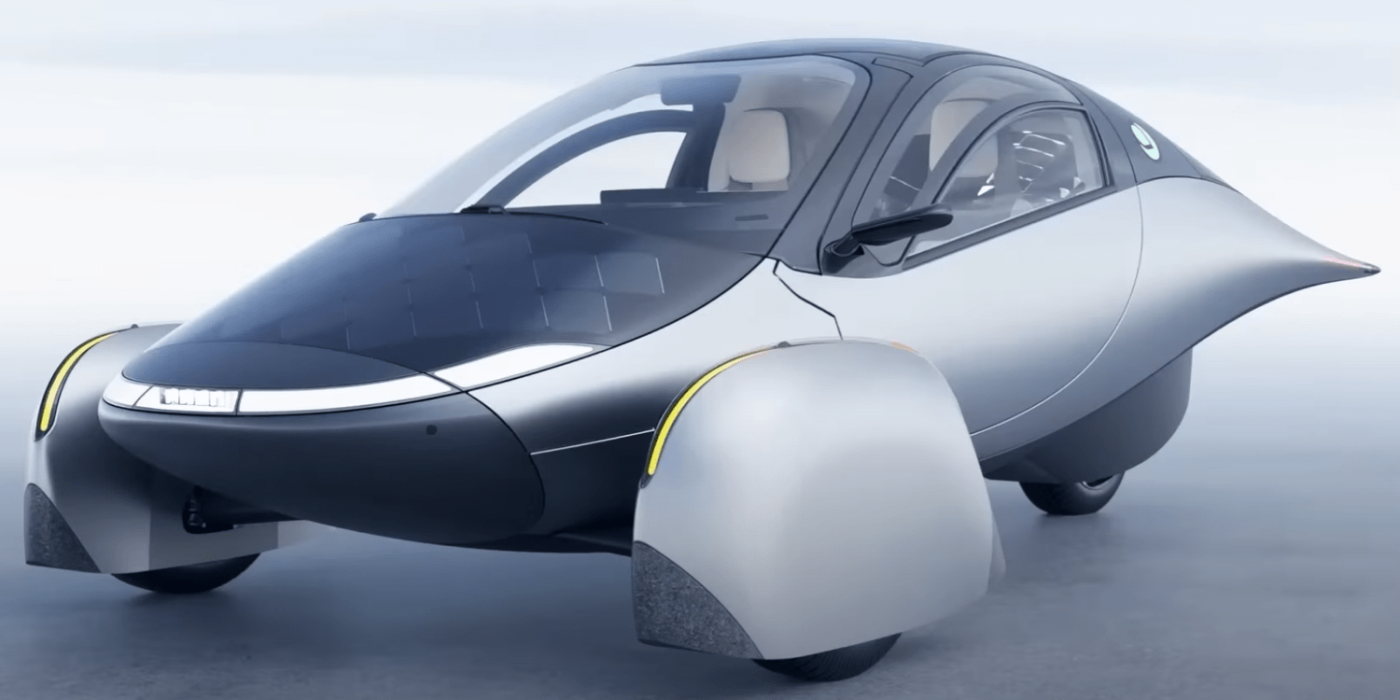Aptera presents the ‘launch edition’ of its solar trike
The US start-up Aptera Motors has presented the ‘Launch Edition’ of its three-wheeled solar electric car, which the company plans to start producing by the end of 2023. However, the start of production is not yet assured: Aptera needs further capital.
++ This article has been updated. Kindly continue reading below. ++
According to Aptera, the production launch version of the two-seater solar-powered electric car planned for production achieves a cW value of 0.13 and a range of 400 miles or 643 kilometres. The wheel motors come from Elaphe, while the battery cells are sourced from Eve Energy.
Aptera does not provide further details on the battery, such as the energy content, in the announcement for the “Launch Edition” – earlier reports spoke of 40 kWh for the 400-mile version. The variants with a smaller or larger battery (for an alleged range of up to 1,600 kilometres) are not offered, at least in the ‘Launch Edition’.
The AC onboard charger has an output of 6.6 kW. Aptera does not specify the charging time (which would make it possible to draw conclusions about the battery size). With 110 volts, electricity for 13 miles should be recharged per hour, with 240 volts for 57 miles. Assuming that the AC charging power remains constant over the entire charging process, it would take seven hours at 240 volts to charge from 0 to 100 per cent – at 6.6 kW charging power, this would in turn result in 46.2 kWh in the battery. However, this figure has only been calculated using the above data and has not been confirmed by the company.
What is new, however, is that contrary to earlier announcements, there will also be a DC charging option. Interesting here: Aptera does not want to rely on the open CCS standard, but Tesla’s Supercharger network. “We will be able to offer between 40 and 60 kW DC fast charging with our Launch Edition vehicles. Once testing is complete, we will provide an update on our maximum charging rates,” the company said. Aptera is also working on a 100 kW charging option to be unveiled later – there are no further details on this. So whether the 100 kW charging capacity is tied to a larger battery than the one in the “Launch Edition” is not confirmed.
Aptera gives a figure for the installed solar units: The cells, which are integrated into the front area, dashboard, roof and tailgate, are supposed to be able to charge up to 40 miles or 64 kilometres a day – or 11,000 miles or 17,700 kilometres per year. However, as is usual with PV systems, these are maximum values – depending on the weather or the location of the parking space, the yield of the solar cells can be significantly lower. “In a place with medium solar radiation like New York or Chicago, you only have to plug in about three times a year,” the company promises. In a place with high solar irradiation (Southern California is mentioned, for example), you would never have to charge at a socket – as long as you do not drive more than the American average of 29 miles per day.
Little has changed in the basic concept of the electric trike since it was first unveiled. The slim cabin is 4.55 metres long, the entire vehicle 1.40 metres high. Since the free-standing but disguised front wheels have to achieve a certain track width to give the tricycle the necessary stability, the vehicle is 2.23 metres wide, although the two-seater cabin is very narrow in itself. Thus, the Aptera requires a footprint similar to that of a mid-size car.
Aptera is now completing the final phase of its product development with the crash tests and validations and then plans to start the production line for the ‘Launch Edition’. According to the start-up, it has received more than 40,000 pre-orders so far.
The plan is to quickly scale production at the plant in Carlsbad, California, to 10,000 vehicles per year in single-shift operation and then double that to 20,000 vehicles per year in two-shift operation. By 2028, Aptera aims to have eight assembly plants operating worldwide.
“While our delivery timeline is funding dependent, our goal is to begin production by the end of 2023,” said Chris Anthony, co-founder and co-CEO. “Once we meet our fundraising objectives, we will be able to provide a more accurate delivery timeline.” However, the communication does not put a precise figure on the outstanding funding requirement.
Update 14 March 2023
Aptera Motors has received a $21 million grant from the California Energy Commission (CEC) to support the company’s vehicle and component manufacturing operations. As part of the effort, Aptera announced plans to “move an innovative, specialized in-wheel Aptera motor manufacturing line from Europe to California as it scales up.”
According to co-CEO Chris Anthony, collaborating with CEC will allow the company to advance solar mobility while creating new jobs in California. “Our over-arching goal is to meet the demand for our solar electric vehicles to have a real impact on climate change, sharing in CEC’s ultimate mission.”





1 Comment